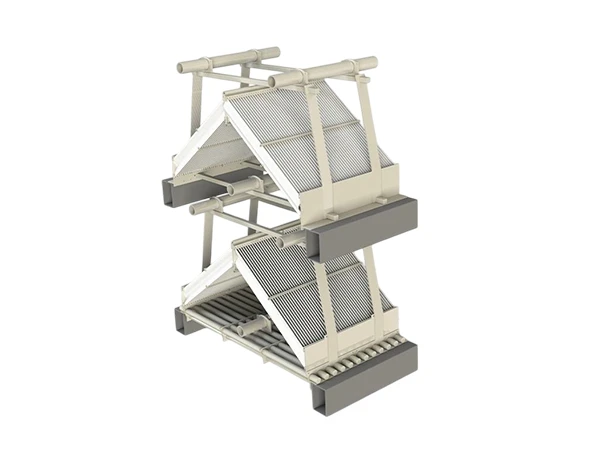
A classic layout with a simple structure and uniform gas flow distribution, suitable for most conventional flue gas desulfurization applications.
A roof mist eliminator typically consists of two stages of “ridge-shaped” modules along with a flushing system. The first stage performs coarse mist elimination (capturing larger droplets, e.g., 20–30 μm), while the second stage ensures fine mist removal (capturing smaller droplets, e.g., 15–20 μm). The modules are arranged at an angle of 37.5° to the horizontal plane, ensuring uniform gas flow distribution, a large flow area, reduced pressure loss, and mist elimination without dead zones. This design is suitable for high gas velocities and wide fluctuations in flue gas flow, and is commonly used in large-scale units.


A classic layout with a simple structure and uniform gas flow distribution, suitable for most conventional flue gas desulfurization applications.

The vanes are arranged at more complex angles to the gas flow, enhancing collision and separation efficiency, and allowing better utilization of absorbent liquids.

The vanes are arranged at more complex angles to the gas flow, enhancing collision and separation efficiency, and allowing better utilization of absorbent liquids. It requires only a single layer of support beams, reducing the overall height of the mist elimination system.

| Material | PP, stainless steel, FRP, polysulfone, etc. |
| Dimensions | Customizable |
| Vane spacing | 20 – 50 mm, customizable |
| Outlet droplet content | ≤ 50 mg/Nm3 |
| Ultimate separation particle size | 24 μm |